
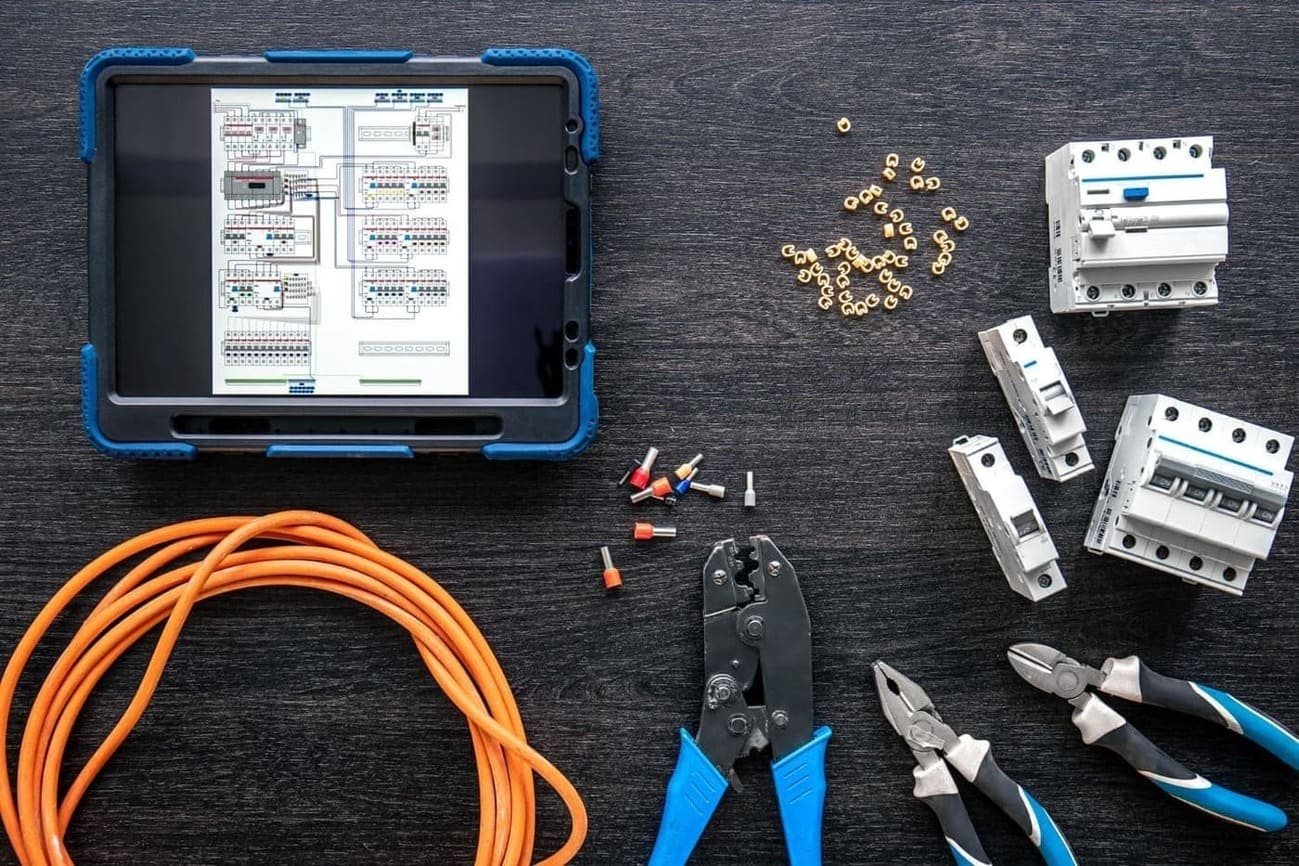
Why and Where Do We Need Fuses or Circuit Breakers?
Sizing fuses and circuit breakers correctly is essential for solar power system safety and protection. Solar systems require overcurrent protection devices at three critical locations: between solar panels and charge controller, between charge controller and battery, and between battery and inverter.
Quick Answer: Use the 156% safety factor (1.56 multiplier) for solar panel fuses by multiplying the short circuit current (Isc) by 1.56. For charge controller to battery connections, multiply the controller's rated charge current by 1.25.
For battery-to-inverter fuses, calculate: Inverter Watts ÷ Battery Voltage ÷ Efficiency × 1.25.
Fuses and circuit breakers protect solar systems from overheating, fire hazards, and equipment damage caused by short circuits and over-voltage conditions. While not mandatory for operation, the National Electrical Code (NEC) strongly recommends installing these protective devices. DC-rated components are required for solar applications since DC current is harder to interrupt than AC current, a 120VAC breaker may only be safe for 48VDC or less.
This guide covers exact calculations for series, parallel, and series-parallel solar panel configurations; proper wire gauge sizing from 14 AWG to 4 AWG based on amperage, and step-by-step examples for 12V, 24V, and 48V systems. Learn the difference between fuses (one-time use, faster response) and circuit breakers (reusable, convenient for troubleshooting), and discover when to use ANL fuses, MIDI fuses, Class T fuses, or DC-rated circuit breakers for your specific application.
When assembling your solar power setup, incorporating protection through fuses or circuit breakers is the optimal approach. These protective devices safeguard your wiring from overheating and shield all connected equipment from fire hazards or damage in the event of short circuits. Their purpose is to defend against system over-voltage conditions and short-circuit damage. While they aren't required for basic system operation, installing fuses or circuit breakers for safety reasons is strongly advised, particularly for off-grid solar system installations.
We suggest installing fuses or circuit breakers at three critical points:
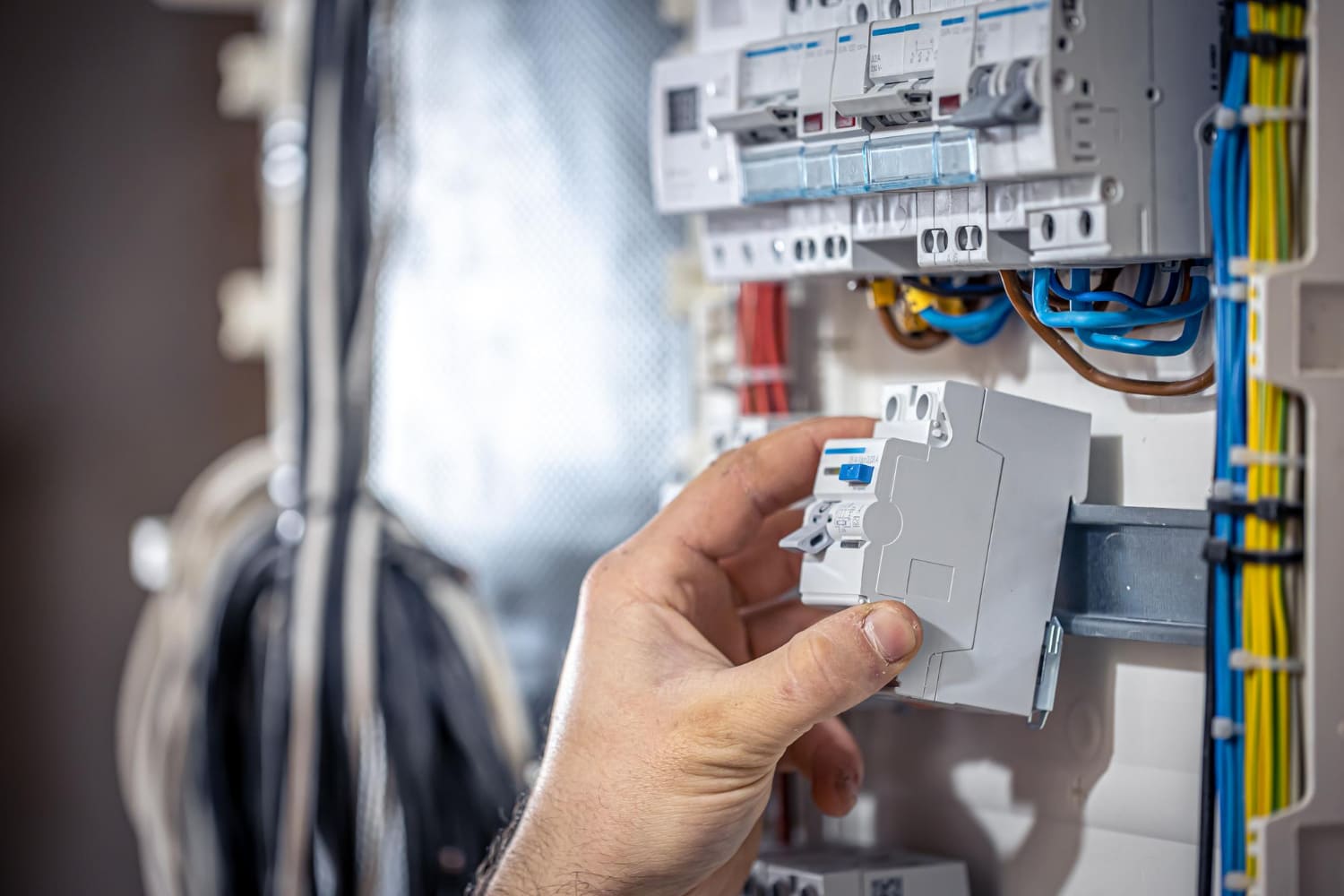
Sizing Fuses and Circuit Breakers
The appropriate fuse or circuit breaker size depends on multiple factors, including application scenario, system capacity, and additional considerations.
Application Scenario: The specific equipment or system requiring protection determines the necessary fuse or circuit breaker size.
System Capacity: Your system's total electrical capacity is a major factor. Systems with higher capacity need larger fuses or breakers to safely manage greater current levels, whether you're working on residential projects or commercial solar design work.
Fault Current Analysis: Evaluating possible fault currents assists in determining proper sizing for fuses or breakers. This evaluation guarantees they can rapidly interrupt excessive currents to prevent hazards or damage.
National Electrical Code (NEC) Compliance: Following electrical codes and standards like the NEC ensures both safety and regulatory compliance. These standards offer sizing guidelines for fuses and breakers tailored to specific scenarios and applications. Understanding solar permit application requirements helps ensure your protection devices meet all code requirements.
Voltage Rating: Fuses and breakers come with voltage ratings that must correspond to your system voltage. Incorrect voltage ratings can result in inadequate protection or equipment damage.
Environmental Conditions: Environmental elements such as temperature and humidity influence fuse and breaker performance. Sizing may require derating factors to compensate for these conditions, as outlined in renewable energy best practices.
Future Expansion: Planning for future growth is prudent. Selecting fuses or breakers with additional capacity permits adding loads later without requiring immediate upgrades.
Manufacturer Recommendations: Reviewing manufacturer specifications and guidelines is crucial. Manufacturers typically supply detailed sizing criteria based on their products' capabilities and intended uses.
A fuse connecting solar panels to a charge controller must be sized according to the maximum current passing through it. Per the National Electrical Code (NEC), maximum currents for solar panels should equal 1.25 times the short-circuit currents. For fuses, circuit breakers, and similar protection devices, the NEC requires an additional safety margin of 1.25 (125%), creating a total oversizing factor of 156% (1.25 x 1.25) of the relevant short-circuit currents.
Fuse or circuit breaker sizing between solar panels and a charge controller depends on two elements:
These elements determine the maximum current flowing through your fuse or circuit breaker. Proper wire management and conduit practices ensure your protection devices work effectively.
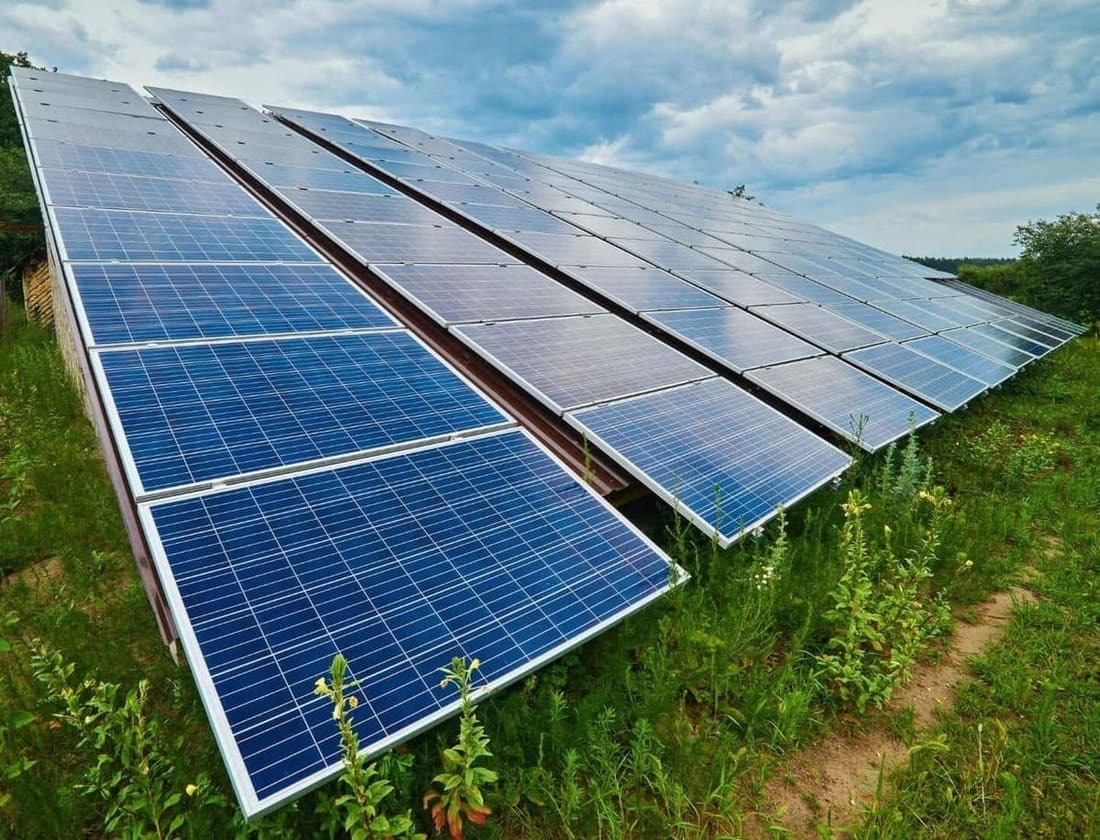
When panels connect in series, each panel's voltage combines while amperage remains constant. For fuse or circuit breaker selection, check the rated short circuit current (Isc) specification for your panel model. The Isc represents the maximum current your solar panel can generate under any conditions, and it establishes the fuse or circuit breaker size using the formula below:
In this formula, V and I indicate the system voltage and short-circuit current of the solar panel, respectively, while 1, 2, or n indicates the respective solar panel number. For additional information about series, parallel, and series-parallel solar panel configurations, refer to A Guide Between Series and Parallel Connections.
Example
With two 100 W panels in series configuration, each generating 20 volts with a rated short circuit current (Isc) of 5 amps, your total output becomes 40 volts at 5 amps short circuit current.
Multiply Isc by the 156% safety factor to calculate the fuse rating of 7.8A (5A x 1.56)
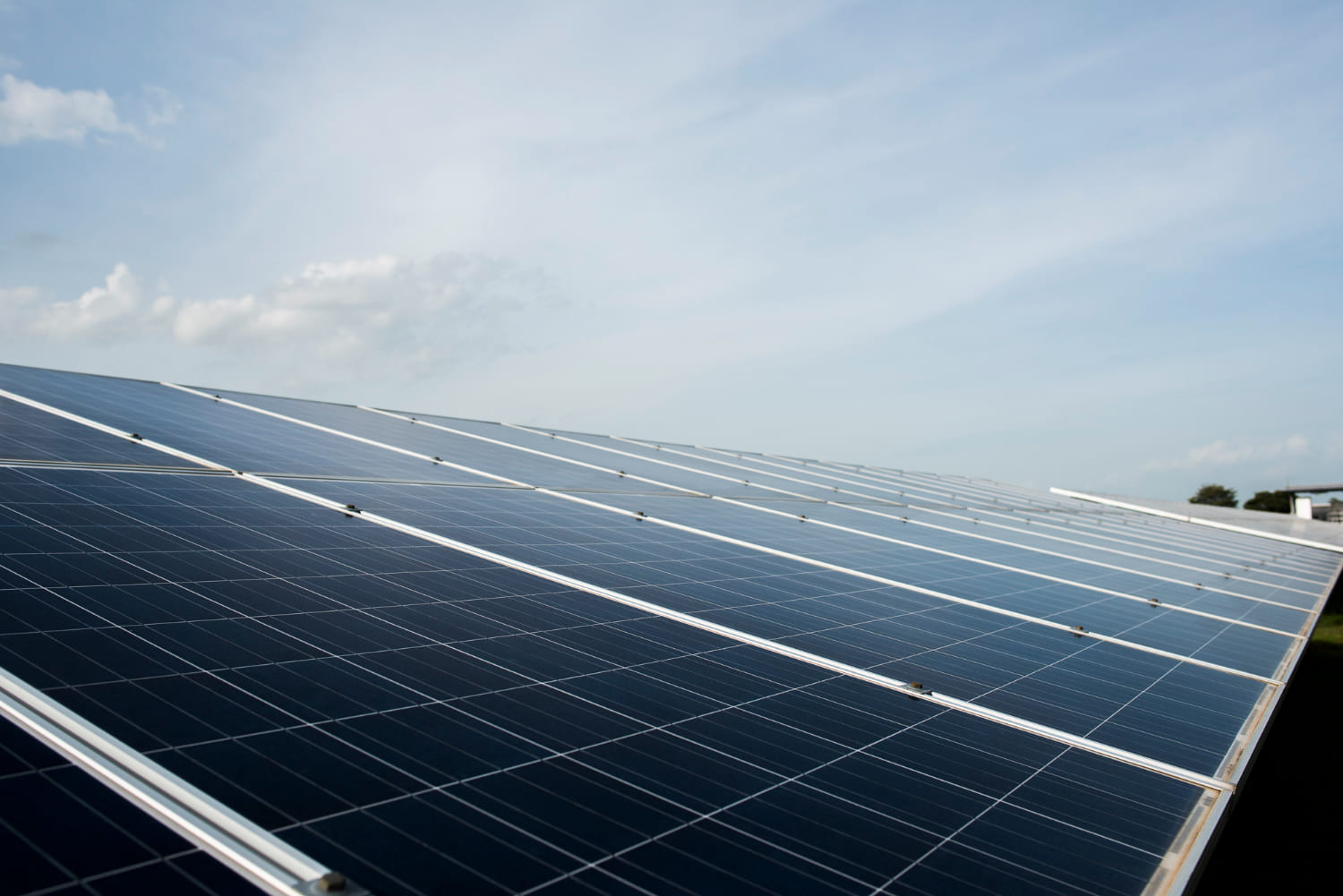
Parallel Connection
When panels connect in parallel, each panel's amperage combines while voltage remains constant. For fuse or circuit breaker selection, check the rated short circuit current (Isc) specification for your panel model. The Isc represents the maximum current your solar panel can generate under any conditions, and it establishes the fuse or circuit breaker size using the formula below:
In this formula, V and I indicate the system voltage and short-circuit current of the solar panel, respectively, while 1, 2, or n indicates the respective solar panel number. For additional information about series, parallel, and series-parallel solar panel configurations, refer to A Guide Between Series and Parallel Connections.
Example
With two 100 W panels in parallel configuration, each generating 20 volts with a rated short circuit current (Isc) of 5 amps, your total output becomes 20 volts at 10 amps short circuit current.
Multiply Isc by the 156% safety factor to derive the fuse rating of 15.6A (10 x 1.56).
When panels connect in a series-parallel configuration, both amperage and voltage combine. For fuse or circuit breaker selection, check the rated short circuit current (Isc) specification for your panel model. The Isc represents the maximum current your solar panel can generate under any conditions, and it establishes the fuse or circuit breaker size using the formula below:
In this formula, V and I indicate the system voltage and short-circuit current of the solar panel, respectively, while 1, 2, or n indicates the respective solar panel number. For additional information about series, parallel, and series-parallel solar panel configurations, refer to A Guide Between Series and Parallel Connections.
Example
With four 100W panels in series-parallel configuration (two panels in series, then paralleled), each generating 20 volts with a rated short circuit current (Isc) of 5 amps, your total output becomes 40 volts at 10 amps short circuit current.
Multiply Isc by the 156% safety factor to derive the fuse rating of 15.6A (10 x 1.56).
*V1 and V2 indicate Solar Panel Group 1 and Solar Panel Group 2, respectively.
For optimal protection of your solar panel array, select fuses or circuit breakers that meet the calculated amperage requirements based on your specific configuration. Quality DC-rated fuses designed for photovoltaic applications ensure reliable overcurrent protection. Consider inline fuse holders or breaker enclosures rated for outdoor use when mounting between your panels and charge controller. Understanding solar three-line diagrams helps visualize proper protection device placement.
Your next fuse location sits between the charge controller and battery. To ensure safety, apply a 25% safety margin, resulting in 1.25 times the rated charge current of your charge controller.
Rated Current of Fuse or Circuit Breaker = Rated Charge Current of Charge Controller x 1.25
Example: With a 40A charge controller, use a 50A fuse between the controller and the battery. This protects your system when connecting maximum power to the controller. Additionally, use appropriate wiring that supports the maximum continuous amps for this rating to enhance safety, following IEEE renewable energy technical standards.
Various fuse and circuit breaker options are available for installation between your charge controller and battery bank. Select ANL fuses, MIDI fuses, or DC-rated circuit breakers that match your calculated amperage requirements. These protection devices should be mounted in appropriate fuse holders or breaker panels designed for DC applications and capable of handling your system's voltage. Proper solar permitting guidance ensures your installation meets all safety requirements.
Your final fuse goes between the inverter and the battery. Correct wire sizing and fuse selection are critical for inverter applications due to their high amperage draw characteristics. Fuse size recommendations typically appear in the manual, and most inverters include built-in fuses/breakers. Nevertheless, adding extra overcurrent protection remains good practice. The standard calculation divides the inverter rating by battery voltage, then multiplies by a safety factor.
Fuse Rating = Inverter Watts/Battery Rated Voltage/Peak Inverter Conversion Efficiency x 1.25
Example
Consider a 1000W Pure Sine Wave Inverter with 90% peak efficiency connected to a 12V battery. Divide the inverter watts by both the battery voltage AND the efficiency rating.
Fuse Recommended = 1000W/12V/0.90 x 1.25 = 115 Amp or nearest standard size
Understanding whether you need supply-side or load-side solar interconnections impacts your inverter protection requirements.
High-amperage fuses and circuit breakers designed for inverter applications are available from various manufacturers. Options include Class T fuses, ANL fuses rated for high currents, or DC-rated circuit breakers suitable for battery bank connections. Ensure the protection device you select can handle the high amperage demands of your inverter and is properly rated for your system's DC voltage. Resources from the American Solar Energy Society provide additional guidance on proper inverter protection.
Consider the nominal battery voltage (12V) as the minimum continuous amps, since this value increases with low battery voltage and safety factors. When selecting wire gauge for inverter connections, consider the continuous amps. The chart below displays wire ampacity in conduit per NEC Table.
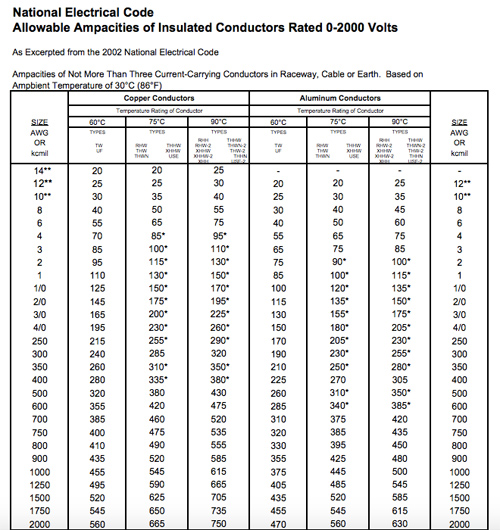
Between solar panels and charge controller: With 2 parallel panels expecting 10A to 12A from panels to controller, a 14 AWG copper wire with 90°C insulation rated for 25A works for this application when oversized for protection.
Between charge controller and battery: When connecting and expecting 40A from the controller to the battery, an 8 AWG copper wire with 90°C insulation rated for 55A works for this application when oversized for protection.
Between battery and inverter: When connecting and expecting approximately 92A from battery to inverter, a 4 AWG copper wire with 90°C insulation rated for 95A works for this application when oversized for protection.
For comprehensive guidance on proper wire sizing and code compliance, explore professional solar design services or consult the Department of Energy's solar homeowner guide.
NOTE:
This provides a brief overview and summary for fuse selection and wire gauge sizing for your system. Additional factors, including cable length, voltage drop, and fuse/breaker types, may require consideration depending on your application. For comprehensive wire sizing details in PV systems, see Sizing Wires for PV Systems. Understanding rapid shutdown compliance for 2025 also impacts your protection device selection.
Properly sizing and installing fuses and circuit breakers throughout your solar power system is non-negotiable for safe, reliable operation. These protective devices serve as your system's first line of defense against electrical faults, equipment damage, and potentially dangerous fire hazards. By following the National Electrical Code guidelines and applying the 156% safety factor for solar panel connections, 125% for charge controller-to-battery links, and proper calculations for inverter connections, you create multiple layers of protection that safeguard your investment.
Remember that overcurrent protection isn't just about meeting code requirements; it's about ensuring your system operates safely for decades. Take the time to accurately calculate your current requirements, select appropriately rated DC components, and use properly sized wiring throughout. Whether you choose fuses for their fast response times or circuit breakers for their convenience, the key is installing them at all three critical junction points: between panels and charge controller, between charge controller and battery, and between battery and inverter.
Your solar power system represents a significant investment in renewable energy independence. Protecting that investment with correctly sized fuses and circuit breakers is a small price to pay for the peace of mind and safety they provide. When in doubt, consult manufacturer specifications, refer to the NEC standards, and don't hesitate to contact solar professionals to ensure your system is both efficient and secure. Additional resources from Energy Star and the EPA's green power markets can further guide your solar journey.
No, you should never use AC-rated circuit breakers for DC applications. DC current is significantly more difficult to interrupt than AC current because it lacks the natural zero-crossing points that occur in alternating current. A breaker rated for 120VAC might only be safe for 48VDC or less. Always select circuit breakers and fuses specifically rated for DC voltage that equals or exceeds your system's maximum voltage. Using improperly rated protection devices can result in the breaker failing to interrupt a fault, leading to fire hazards or equipment damage. For proper component selection, review Green Building Advisor's resources.
Fuses and circuit breakers both provide overcurrent protection but operate differently. Fuses contain a metal element that melts when excessive current flows through, permanently opening the circuit; they must be replaced after each use. Circuit breakers are mechanical switches that automatically trip during overcurrent conditions and can be manually reset for reuse. Fuses typically offer faster response times and are ideal for battery connections, while circuit breakers provide convenience for frequently accessed connection points and troubleshooting. Many installers use fuses at battery terminals for maximum protection speed and circuit breakers at panel disconnect points for easy maintenance access. Understanding solar supply-side connection methods helps determine the best protection approach.
The 156% factor (1.56 multiplier) comes from applying the National Electrical Code requirements twice. First, the NEC mandates that solar panel maximum current calculations use 125% of the short circuit current (Isc) to account for varying environmental conditions. Second, the NEC requires an additional 125% safety margin for the overcurrent protection device itself to prevent nuisance trips and ensure reliable operation. Multiplying these factors together (1.25 × 1.25) equals 1.5625, or 156%. This comprehensive approach ensures your fuses or breakers won't trip under normal operating conditions while still providing adequate protection during fault situations, as detailed in World Bank energy sector guidelines.
While your system will technically operate without fuses, installing protection at all three critical locations is strongly recommended and often required by electrical codes. Each location serves a distinct protective purpose: the panel-to-controller fuse protects against panel short circuits, the controller-to-battery fuse safeguards your battery bank and controller, and the battery-to-inverter fuse protects against the high-current faults that can occur with inverters. Skipping any of these protections leaves your expensive equipment vulnerable to damage. The relatively small cost of fuses and circuit breakers is insignificant compared to replacing a damaged charge controller, battery bank, or inverter due to an unprotected electrical fault. Review solar installation insights for more safety guidance.
Recalculate your protection requirements whenever you add solar panels, upgrade your charge controller, increase battery capacity, or install a larger inverter. For solar panel additions, determine your new total short-circuit current based on your expanded array configuration and apply the 156% factor. If you upgrade your charge controller, multiply the new controller's rated charge current by 1.25. For inverter upgrades, use the formula: Inverter Watts ÷ Battery Voltage ÷ Efficiency × 1.25. Always ensure your wire gauge can also handle the increased amperage; sometimes expanding your system requires both larger protection devices and thicker wiring. When your calculated amperage exceeds your current fuse or breaker rating, upgrade to the next standard size that meets or exceeds your requirement while staying within your wire's ampacity limits. For system expansion assistance, learn about rapid shutdown requirements that may apply to your upgraded system.
We are dedicated to providing top-notch solar permit services to homeowners, business owners, DIY, and solar installers. Contact us today.